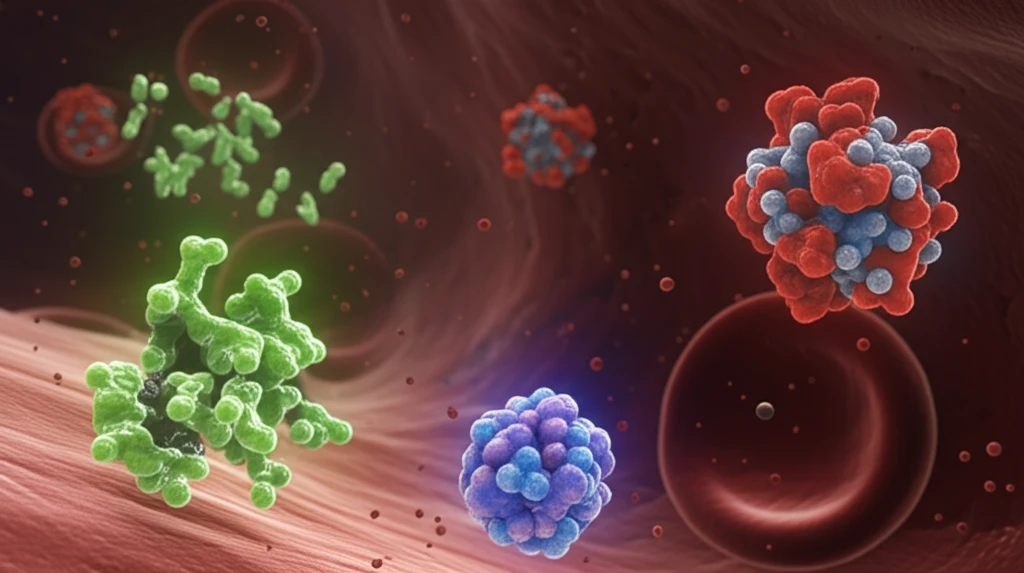
Unlock the Secrets of Mammeisin: How This Natural Compound Could Revolutionize Wellness
"Discover the potential health benefits and unique properties of Mammeisin, a promising natural compound, and its interaction with the body's key proteins for enhanced well-being."
In the realm of natural compounds poised to redefine therapeutic interventions, coumarins stand out with a well-established reputation. These compounds, recognized for their effectiveness in preventing thromboembolism and managing stroke risks, have long been a cornerstone in cardiovascular health. Their role extends to mitigating the severity and mortality associated with cardiac dysrhythmias like arterial fibrillation, making them indispensable in modern medicine.
Within the coumarin family, Mammeisin (MA) has garnered attention for its unique structural and functional attributes. This natural compound, found in plants such as Mammea africana, has sparked interest among researchers keen on unlocking its full potential. Like other coumarins, Mammeisin features a distinct 2H-1-benzopyran-2-one nucleus, a structural motif known for diverse biological activities ranging from anti-convulsing to anti-tumor properties. Beyond its therapeutic potential, Mammeisin's sweet taste and aromatic odor have also positioned it as a flavoring agent in various applications.
The intersection of molecules like Mammeisin with biological systems has become a focal point in drug discovery, particularly focusing on how these compounds interact with proteins within the body. These interactions, especially with proteins like Bovine Serum Albumin (BSA), are vital in understanding how drugs are transported, metabolized, and ultimately affect their target tissues. Serum albumin, abundant in blood plasma, serves as a carrier for various ligands, including drugs, influencing their distribution and free concentration within the body. This article delves into the electrochemical behavior of Mammeisin and its interaction with BSA, aiming to uncover new insights into its therapeutic mechanisms.
Mammeisin and Bovine Serum Albumin (BSA): A Molecular Interaction

The study of Mammeisin's electrochemical behavior reveals fundamental aspects of its interactions within biological systems. Researchers employed advanced electrochemical techniques such as cyclic voltammetry (CV) and square wave voltammetry (SWV) to observe how Mammeisin reacts in a controlled environment that mimics physiological conditions. These experiments were conducted in a solution of acetone and phosphate buffer, maintaining a pH of 5.3 to simulate bodily fluids. The tests utilized a glassy carbon electrode (GCE), a standard tool in electrochemistry that facilitates the transfer of electrons during redox reactions. These methods enabled precise monitoring of Mammeisin's oxidation process, which involves the exchange of electrons and protons, crucial for understanding its chemical activity.
- Electrochemical Analysis: Revealed oxidation behavior and pH dependence.
- Interaction with BSA: Demonstrated formation of electrochemically inactive complexes.
- Binding Affinity: Displayed a specific affinity to Bovine Serum Albumin (BSA).
- Diffusion Dynamics: Provided insights on molecular movement in biological environments.
Future Directions and Implications
The electrochemical exploration of Mammeisin and its interaction with BSA offers a foundation for future research and potential therapeutic applications. Understanding how Mammeisin interacts with proteins, such as BSA, paves the way for designing more effective drug delivery systems and optimizing its therapeutic efficacy. As research progresses, Mammeisin may emerge as a valuable asset in preventive and therapeutic strategies, offering new hope for managing various health conditions.
